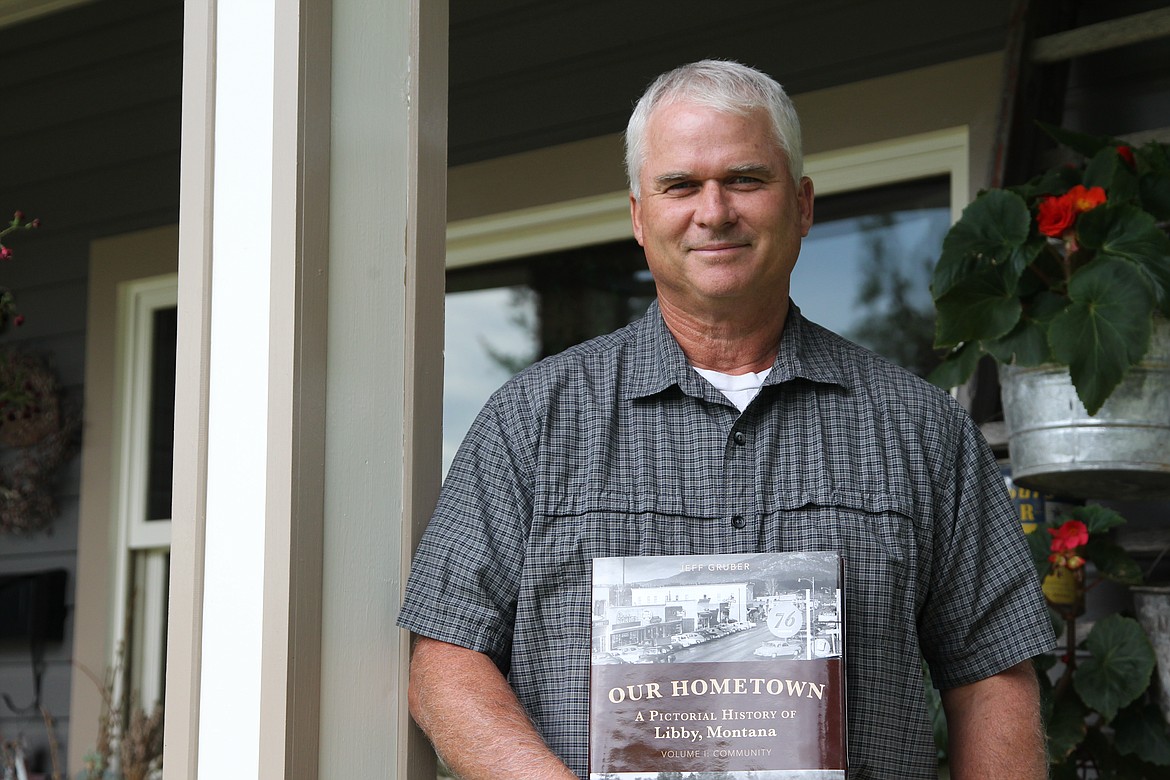Retired teacher puts limelight on city's history with new book
When Jeff Gruber set out to document Libby’s history, he thought the project might take him a few months. Now, after 17 years of cataloging, researching and writing, the first of his three volumes on the city and surrounding areas is hitting bookshelves.
Looking back on the process, Gruber said his ever-extending deadline prompted some ribbing from friends and colleagues. But, in the end, he was glad he gave the work the time it deserved.
“I wanted this to be quality. So many times, especially like in teaching or education, we kind of get by and do it on a budget,” he said. “I just wanted a book that Libby could be proud of.”
Gruber left no stone unturned when sourcing records for his trilogy. His research took him to archives as far as Tacoma, Wash., and Saint Paul, Minn. He spent hundreds of hours scrolling through microfilm, digging through photograph collections at the Libby Heritage Museum and interviewing aging residents.
His first volume, “Our Hometown: A Pictorial History of Libby, Montana," which goes on sale Aug. 12, delves into Libby’s communal history. The people, organizations, churches and businesses that defined the city from the discovery of gold at Libby Creek to the completion of the Libby Dam are the primary subjects of the book.
In book two, Gruber plans to explore Libby’s outlying areas, including homesteads and the towns of Warland and Jennings. The book also will cover mining ventures and the Libby Dam project. In the third volume, the one he is most excited for, Gruber will dive into the history of the local timber industry.
Having completed the bulk of his research, Gruber expects to finish the next two volumes in two to three years in succession.
Gruber traced his interest in Libby’s history back to high school when he worked afternoon and weekend shifts at the Lincoln County Library. By spending time with celebrated local librarian Inez Herrig and her husband, Bob Herrig, both lifetime residents, Gruber immersed himself in stories of Libby's past. The tales his stepfather, a Libby native, shared with him about the city’s history only further his curiosity.
After starting at Libby High School as a history teacher in 1989, Gruber discovered another avenue to explore and share his passion for local lore. Beginning in 1995, he involved his classes in the Montana Heritage Project, a program that encourages students to make their community the subject of serious historical study.
“The explorations with my students over those 11 years made me aware of the rich and unique history of my hometown,” he wrote in the preface of the first volume.
Gruber said the idea of compiling and writing a pictorial history of Libby likely first came to him while he was filing photograph collections at the Heritage Museum in the 1990s.
“There were no archives, there was stuff in boxes and a lot of photographs,” he said. “I started organizing them and cataloging them and putting them into a more stable format … that was probably when I first started thinking it’d be nice to have a book.”
In 2006, he took a quarter of the school year off to throw himself full time into the project.
As part of his research, Gruber painstakingly combed through newspaper records, noting each milestone the city reached. In 1906, for example, the Dawson Lumber Company built the first large sawmill in the area, marking the start of Libby’s ascension as a timber town.
Microfilm also helped Gruber identify watersheds in Libby’s community history. The first mention of Legion baseball he documented was in an Aug. 6, 1953 article about the team’s loss to Fort Peck.
The time between 1909 and 1915 was the most intriguing chapter in Libby’s history for Gruber. During this period, Lincoln County was incorporated, Julius Neils purchased the Dawson Lumber Company and electricity came to Libby.
“That was an interesting time to see Libby evolve and develop,” he said. “Our early town dwellers were really invested in the town: They wanted to have good schools, they wanted to have good streets, they wanted to have electricity. They were really trying to put Libby on the map.”
The boom didn’t come without its growing pains, though. A quirky feature of Libby’s early electrical system was that it only operated for three days a week and only for a few hours. Initially, the city relied on Flower Creek as both a power and water source. Often there wasn't enough water flowing in the stream to meet both needs.
“It was electricity in name only,” said Gruber.
Gruber’s research also put him in contact with local notables such as Margaret Redfield-Wenk. Born into a homesteading family in 1918, Redfield-Wenk experienced much of Libby’s early development first-hand. After Gruber began working on his book, Redfield-Wenk sat for countless interviews and entrusted him with binders of photographs and notes. In thanks for her help, Gruber dedicated his book to her.
Gruber will hold a presentation and his first book signing at the Memorial Center on Aug. 12 from 6 to 9 p.m. He will also be available for signing at the Libby Chamber of Commerce on Aug. 13 from 2 to 5 p.m., the Heritage Museum on Aug. 14 from 11 a.m. to 2 p.m., The Keep on Aug. 19 from 2 to 5 p.m. and Timberline Auto on Aug. 20 from 4 to 7 p.m. and Aug. 21 from 10 a.m. to 1 p.m.
Beginning Aug. 16, “Our Hometown: A Pictorial History of Libby, Montana'' will be available at Homesteaders Ranch and Feed, Mountain Meadows, the Heritage Museum, The Keep and the Libby Chamber of Commerce.
Norm’s Soda Fountain in Kalispell also will stock the book.

